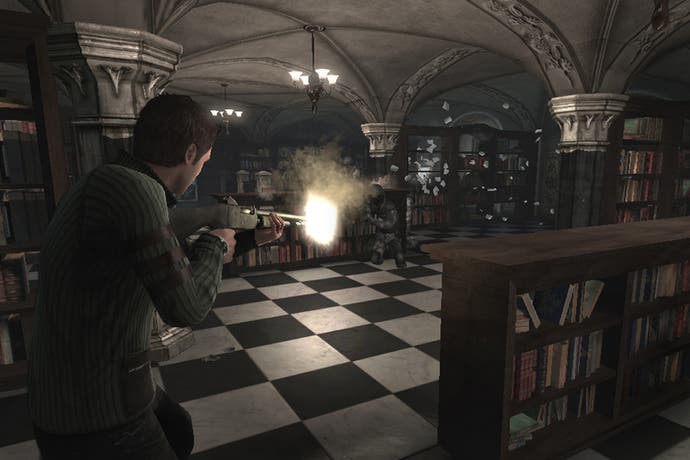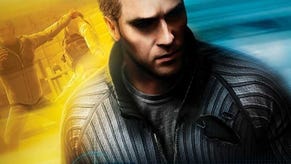Robert Ludlum's The Bourne Conspiracy
Re-Bourne.
That desire evolved into a combat system that simply has two attack buttons - light and heavy - and a block button. Combining moves on those buttons (mostly in the form of three-tap sequences) gives Bourne a vast range of movements and attacks - and landing attacks successfully charges an adrenaline bar. Fill a segment of that bar, and the fourth face button becomes active - allowing Bourne to use whatever he's standing nearest to in the environment for a takedown.
Bourne To Be Wild
The combat system itself works rather well - reminding us, in a more solid and gritty way, of the combat in Yu Suzuki's cult classic Shenmue. The basic fight mechanism works nicely enough, with punching, kicking and blocking all flowing nicely, but it's all broken up by the incredibly satisfying takedowns - quick-time events which call for swift button presses in time with on-screen cues in order to cripple your unfortunate foes.
"Takedowns are really what makes Jason Bourne, they're really what set him apart from any other character," enthuses Valdez. "Takedowns are anything from him weaponising an ordinary object, turning it into a lethal weapon, to using his environment in any means possible. Everything around him is a way of disposing of henchmen and different enemy types."

Some of the takedowns are from the movies - yes, the infamous fountain pen stuck in between the fingers during the Castella fight is in there - while most are entirely original. You'll find yourself drowning your foes in kitchen sinks, pile-driving them through doors and windows, smashing them through tables, walloping their faces into ceramic plant pots, beating their skulls with fire extinguishers... No fight is without its requisite wince moments.
Other aspects of the game play more of a supporting role. The shooting sections are fairly competently put together, using the same adrenaline system to perform long-range takedowns - but much of the time we found it simply more satisfying to close in to our foes, throw down the guns and engage in a bout of fisticuffs. The destructible environments, however, remain a key part in the shooting bits - barrels and cars go up in explosions when shot, while wooden crates can be destroyed easily enough to get at the fleshy enemies cowering behind them.
One section we're not entirely sure about at this stage is the game's chase and evade gameplay, which we got to see in the scene where Bourne tries to escape the Zurich embassy. An iconic scene in the movie, here it's extended to include more action and combat - but it's also full of quick-time events and will take a few retries to get through, which carries unwelcome shades of trial-and-error gameplay.

Valdez acknowledges the difficulties in making an effective chase sequence. "It's really hard to design a chase sequence - chase means you're being pushed, it's about intensity and it's about pace. We saw it as a great opportunity, because that's the Bourne that everyone knows from the movies. He's always on the run. But from a gameplay standpoint, historically, being on the run and being chased isn't necessarily the most fun thing to do."
He reckons they've got it right with The Bourne Conspiracy's linear, quick-time-event-filled stage - all of which takes place against a prominent countdown timer. "I think we succeeded," he says. "You're always on the edge of your seat, and it's not one of those moments where it's trial-and-error and it's going to take you an hour to get through. We do throw in a couple of gotcha moments, just to keep you on your toes. That's what we wanted - to create tension and pace, and keep players moving and engaged." Whether the team has succeeded in that or not, we'll be able to see when the game launches in a few months' time - with the promise of a demo version so you'll be able to take a gander for yourself if you're not convinced.
Robert Ludlum's The Bourne Conspiracy is due out on PS3 and 360 later this year.


